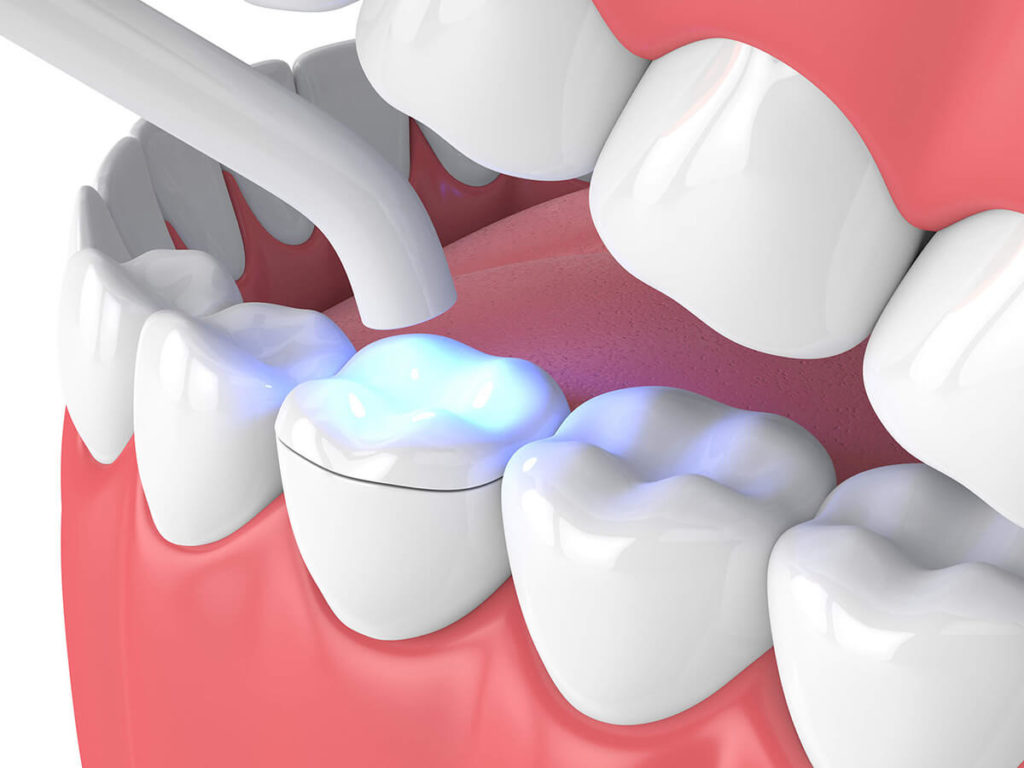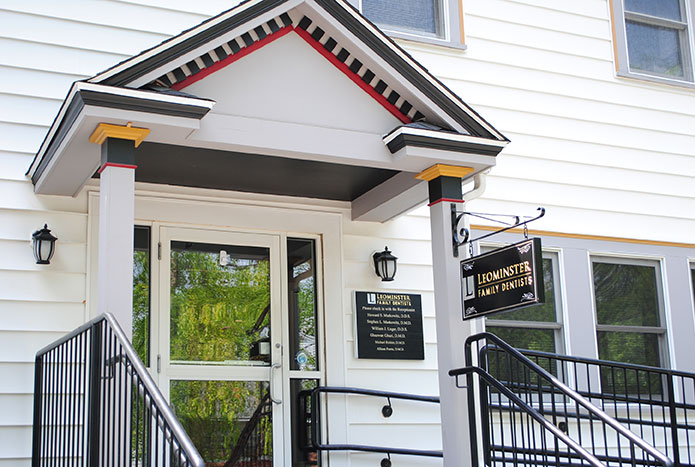Dental Inlays and Onlays
Dental inlays and onlays are used when more than half of your tooth’s biting surface is damaged. They are an alternative to traditional fillings that can reduce the strength of a natural tooth by up to fifty percent.
Dental Inlays and Onlays
Inlays and onlays are bonded directly onto the teeth using special high-strength resins that can actually increase the strength of a tooth by 75 percent. As a result, they can last 10 – 30 years. Both inlays and onlays can be made of porcelain, gold, or composite resin. These pieces are bonded to the damaged area of the tooth.
What is a dental inlay?
An inlay, which is similar to a filling, is used inside the cusp tips of the tooth. Inlays are molded and fitted into the chewing surface of a tooth that has been damaged through decay or injury. They are created using an imprint of the affected areas that are sent to a lab for manufacturing. An inlay fits into the hollow of the tooth, but they do not affect the cusps. When the dentist takes the impression, they also attempt to best match the color of the tooth as closely as possible. This way when they are placed in the mouth they are not noticeable. The material used for an inlay can be either porcelain or a composite material that is stronger and more durable than traditional fillings.
What is a dental onlay?
An onlay is a more substantial reconstruction, similar to the inlay but extending out over one or more of the cusps of the tooth. Onlays are used for decay and damage to the cusps of a tooth as well as the biting surface. These are used when a cavity is too big to fill with a standard filling, or that the tooth could crack due to weakness. An onlay will increase the strength of a tooth and protect the decaying area. Unlike an inlay, this area can include the cusps as well as the space in between.

-
How are dental inlays and onlays applied?
Inlays and onlays require two appointments to complete the procedure. During the first visit, the filling being replaced, or the damaged or decaying area of the tooth is removed, and the tooth is prepared for the inlay or onlay. To ensure proper fit and bite, an impression of the tooth is made by the dentist and sent to a lab for fabrication. The dentist will then apply a temporary sealant on the tooth and schedule the next appointment.
At the second appointment, the temporary sealant is removed, and the dentist will make sure that the inlay or onlay fits correctly. If the fit is satisfactory, the inlay or onlay will be bonded to the tooth with a strong resin and polished to a smooth finish.
-
Dental inlay vs. filling—what's the difference?
Inlays and fillings are often used interchangeably but typically, inlays are used for bigger cavities. While they both remove existing decay, how the empty space is filled makes them different.
With a filling, the composite material is used for filling the space and it is a quick process which happens in single visit. However, with inlays, the space is filled with a single piece, that is fabricated in the lab. The inlay is precisely made in the shape and size of the cavity space.
-
Dental onlay vs. dental crowns—what's the difference?
Onlays and crowns are restoration options used to treat a single tooth, typically with a larger area of decay where a filling or inlay would not work. The onlay covers the cusp of the tooth while a crown will cover the entire biting surface of tooth and the tooth’s structure above gum line. Onlays are a less invasive procedure compared to crowns, as they require less of the tooth structure to be removed in order to fit the onlay.
-
When should I consider a dental inlay or onlay?
A dental inlay is used to fill grooves in the tooth to restore or repair a tooth after it sustains harm from injury or decay that goes on to affect the cusp of the tooth.
Dental inlays are more durable than regular dental fillings made from composite or amalgam, and gold inlays are the most durable.
A dental onlay is used to repair a tooth that has move extensive damage affecting the cusp, tips or biting surface of the tooth. Onlays require a temporary solution while the final onlay is sent to a laboratory to be formed correctly.
-
Do dental inlays or onlays hurt?
No, the procedure should be almost entirely painless. We will use a local anesthetic during the procedure to ensure that you don’t feel any discomfort. Following the procedure, it is common for your tooth to be more sensitive to heat or cold for a few days, but this should go away with time.
What are you waiting for?
At Leominster Family Dentists, we believe in providing the best dental care at the most affordable prices. Make your next appointment using our easy online scheduling tool, contact our office if you have any questions, or explore all of the dental services we provide.

